
https://www.youtube.com/watch?v=k034pwfHX4E
Inside an Emerald Cutting Factory
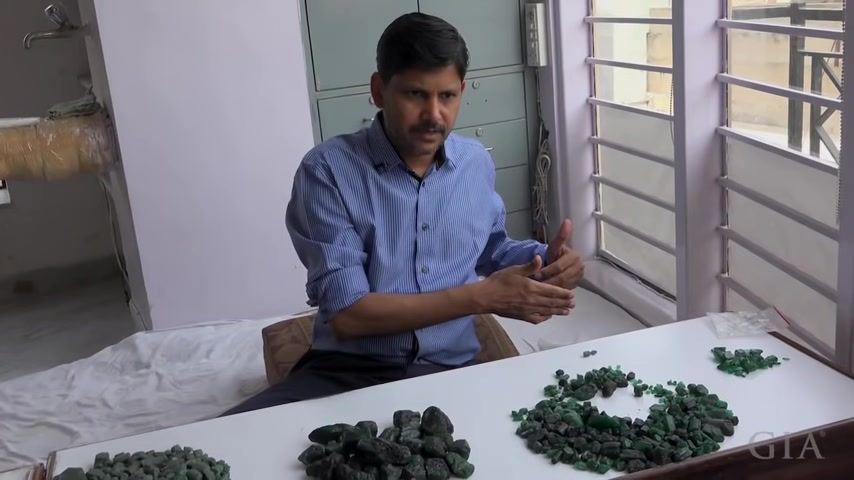
The prime objective of the of now manufacturing the rough is getting the maximum yield out of the rough and removing the maximum inclusions from the rough and getting the maximum yield out of the rough .
If you make a cut stone from this , the valuation will be lesser .
The the realization will be more in a cabbage and you and you will be able to sell it faster as a condition .
Ultimately , you have to see that this stone is going to go in a jewelry , whoever makes it .
So a thing which is gonna look good in a jewelry .
If it has more white inclusions , nobody is gonna set it in a , in a pendant or a ring .
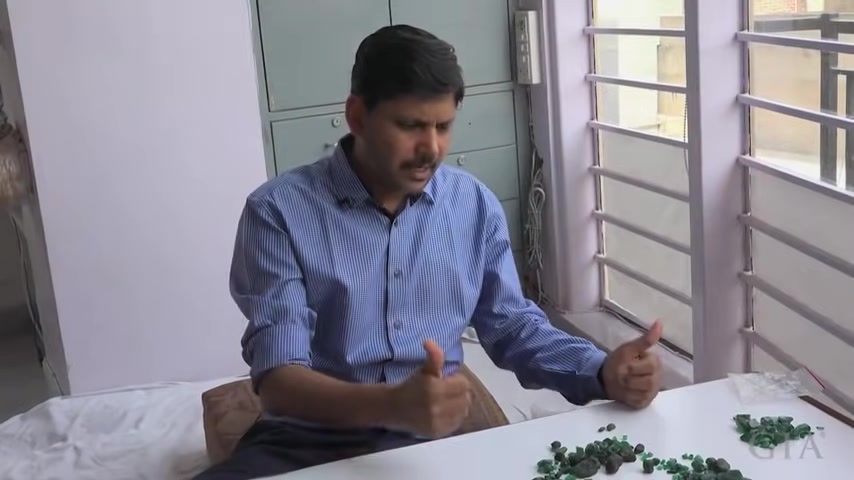
Whereas if it is a good clean material , then you will always get a better price out of it .
As a thumb rule , we apply an inclusion which is in the stone more than 20% we slice it .
If it is less than 20% we grind it .
After the preforms have been made , we have a sufficient quantity of preforms maybe 2 , 3000 carats , then we put them on assortment .
As you can see they are all different grades in here .
This is a lighter bluish material .
This is a more better greener material .
This is with inclusions .
So now this material is ready .
This is all cut stones , the desired shape is there and the table has also been formed .
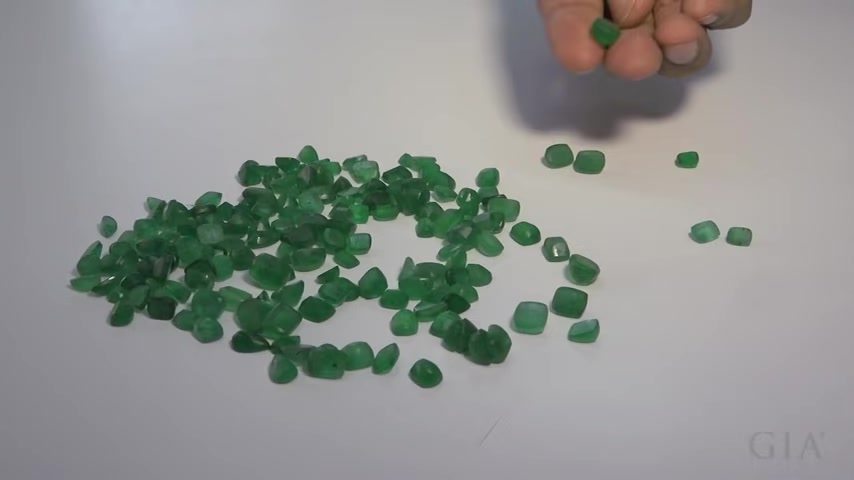
So you have to grade it and then go to the next process which is getting them faceted .
This is the polishing faceting area which we have first .
If it is a calibrated material , we do it the grinding of the edges according to the calibrated size .
Like if it is a seven by five on the machine , which we are going to go further on , we grind it till 7.1 and 5.1 and leave it .
This is a calibration stick .
It should be even from all the sides if it is out from one side and in from the other , then it is going to grind more material because it has to be even on the machine .
So the more the accurate the doping is less the weight you will lose .
While calibrating the material , we use very minute aerolite to stick it to the stick .
It is a glue .

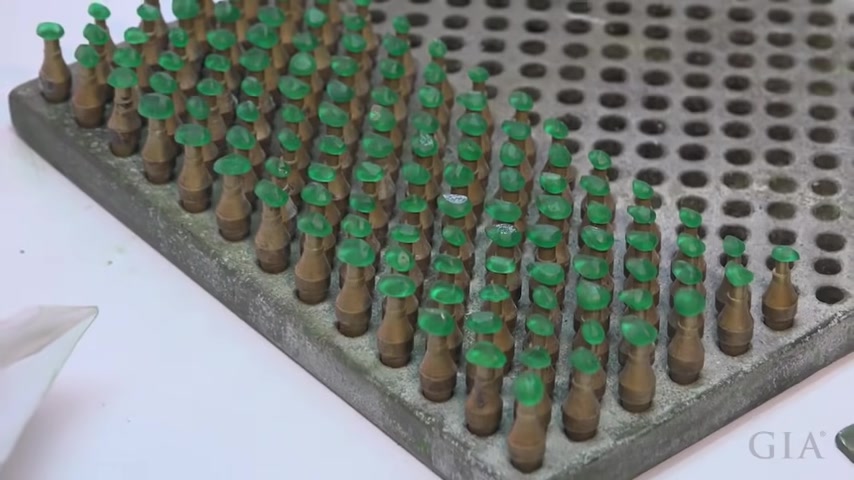
It is basically aerolite which we use and the grip is strong because it is going to go on that calibration machine .
This is the calibrating machine which we have .
And according to the size , there is a master colt here which we fix , then put the dope and then you grind it on the wheel .
Now , if it is a six by four , we have a master , call it a six by four .
So this machine , when you take this here and push it inside , you will get a six by four , then you do the polishing of the table .
You see a little shine in this stone and you don't see a shine on , on the stone which is on my left side .
Whereas on the right side , you see a shine because stable is the most important part in the stone .
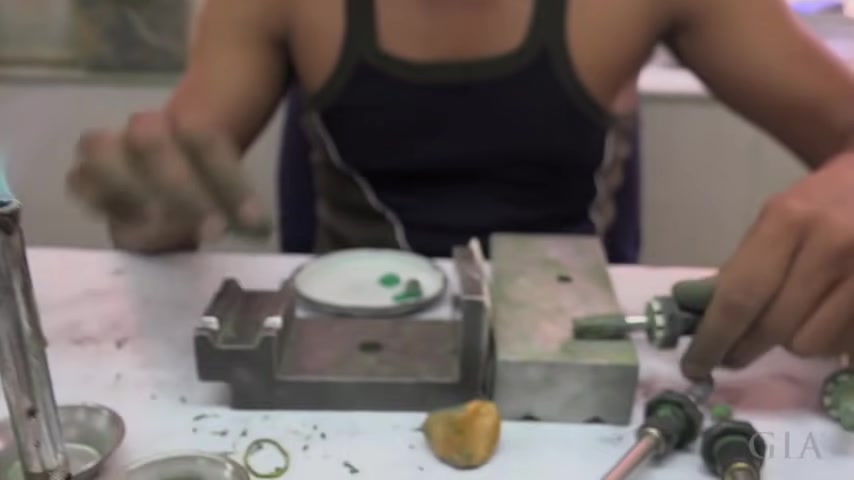
It it should be scratch free after the table has been made .
Then the cutting of the crown of the stone , this is flames as you can see and they are using this to heat the stone very minutely and get the stone on the polishing stick .
After that , we remove it from the stick , stick it from the other side and then we cut the pavilion of the stone .
So this is the three different four different processes which happen .
Yeah , to run a factory , you always need experience as well as the aggression of the youth .
You cannot only work on experience and you cannot only work on youth .
It is probably a mixture , the more intriguing parts like where we lose a lot of weight .
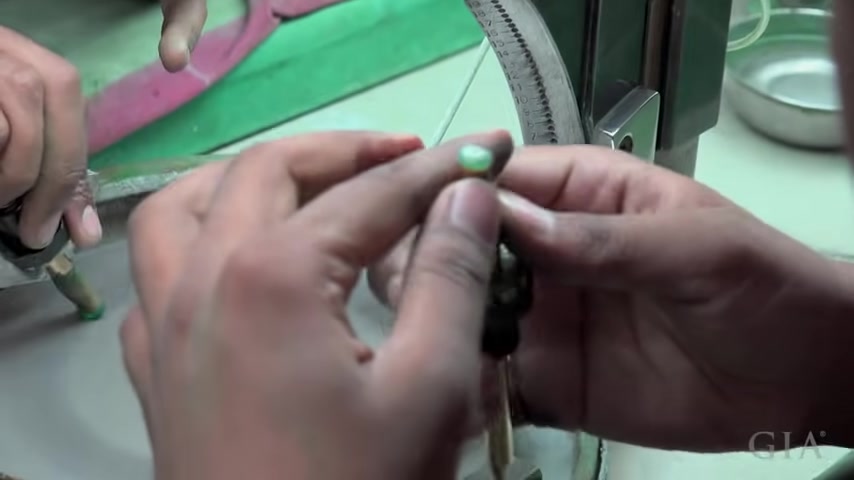
For example , as you could have understand , doping is a very critical part .
So you need an experienced man in that calibrating , you need an experienced man .
Polishing is relatively less experienced .
So probably we have the new people who want to come into the line understand .
So they are doing that materially , the process will be irrespective of the price range of the rough .
The process will be the exactly same .
Even if you are manufacturing uh $5 per gram ruff or you are manufacturing $100 per gram ruff , the process will be the same accuracy and your surveillance will depend on the more the expensive , the more you will be careful about the weight loss and everything .
We don't try to mix 23 different origins together .
If it is Zambian , then we continue for the whole month of the Zambian material .

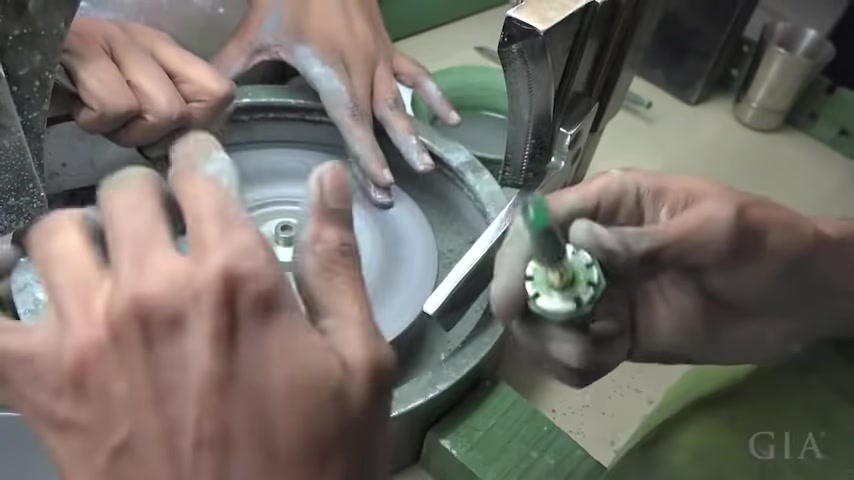
If we want to switch it over to Brazilian material , then we continue for a continuous process of material and preferably what we do is first we polish ovals , then piers , we stick to a particular shape .
Size is not a problem .
We make different sizes but shape , we prefer to do one shape at a time .
So it's again more accurate here .
The polishing material being used is all chromium oxide and zinc oxide .
Thank you .
Normally we have green labs now which we import from Israel , which is a condensed mixture of chromium oxide , diamond powder , everything which they make in Israel .
So that has a better faceting and polishing result .
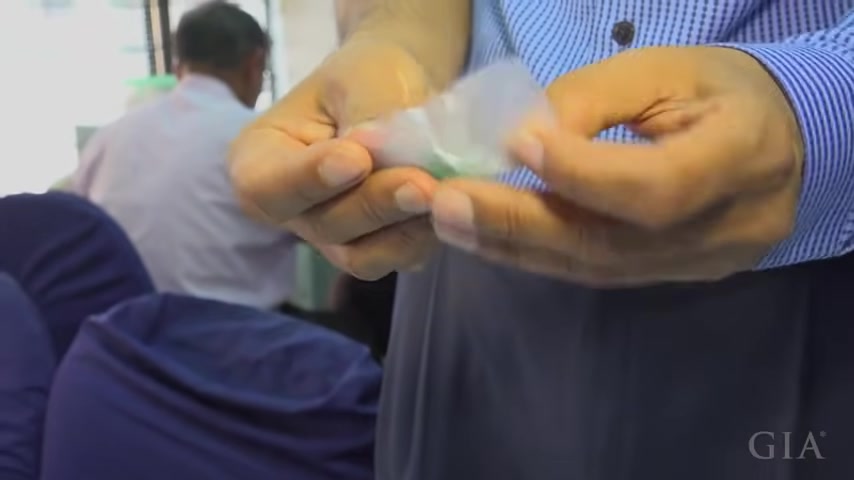
So in a hybrid material , normally we use the green labs , emerald being a brittle stone .
We have put these into plastic bags , which has a little oil in this so they don't dry off and the cracks doesn't come out .
Now , if you see , you will be having all the different shades from light to the , you can see the significant difference in color .
There is no inclusion here .
There are cracks in the stones but no black spots or white spots in the stone .
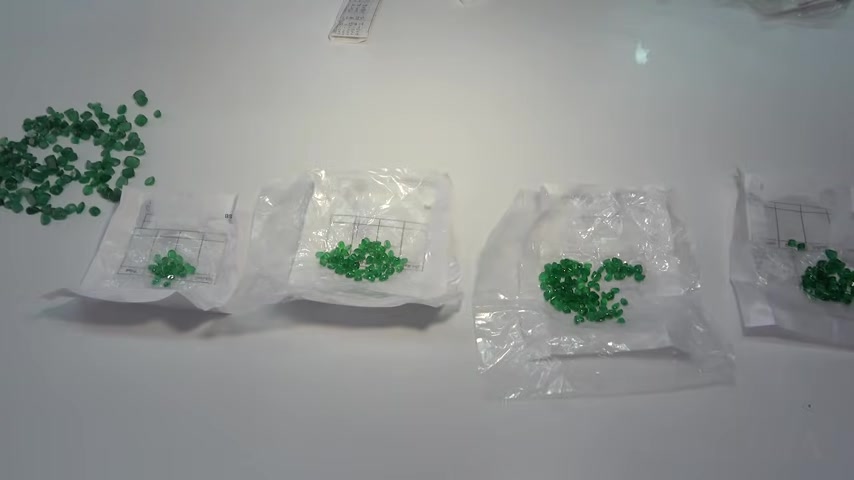
There will be cracks but this all has your frequency good brilliance in the stone which I say the good luster from here , the lightest shade to the darker shade , mixed shapes and mixed sizes are there but the quality is not mixed .
It is even quality .
Now here if you look , you will see a different grade very prominently seen .
The difference in luster is there , the color is almost the same but the clarity here is more and here is less so value of this lot is more than this lot .
All this calibrated material is going to go into jewelry .
So you need a specification and all this material be used for exports .
So basically the cutting and everything has to be up to the mark .

Are you looking for a way to reach a wider audience and get more views on your videos?
Our innovative video to text transcribing service can help you do just that.
We provide accurate transcriptions of your videos along with visual content that will help you attract new viewers and keep them engaged. Plus, our data analytics and ad campaign tools can help you monetize your content and maximize your revenue.
Let's partner up and take your video content to the next level!
Contact us today to learn more.